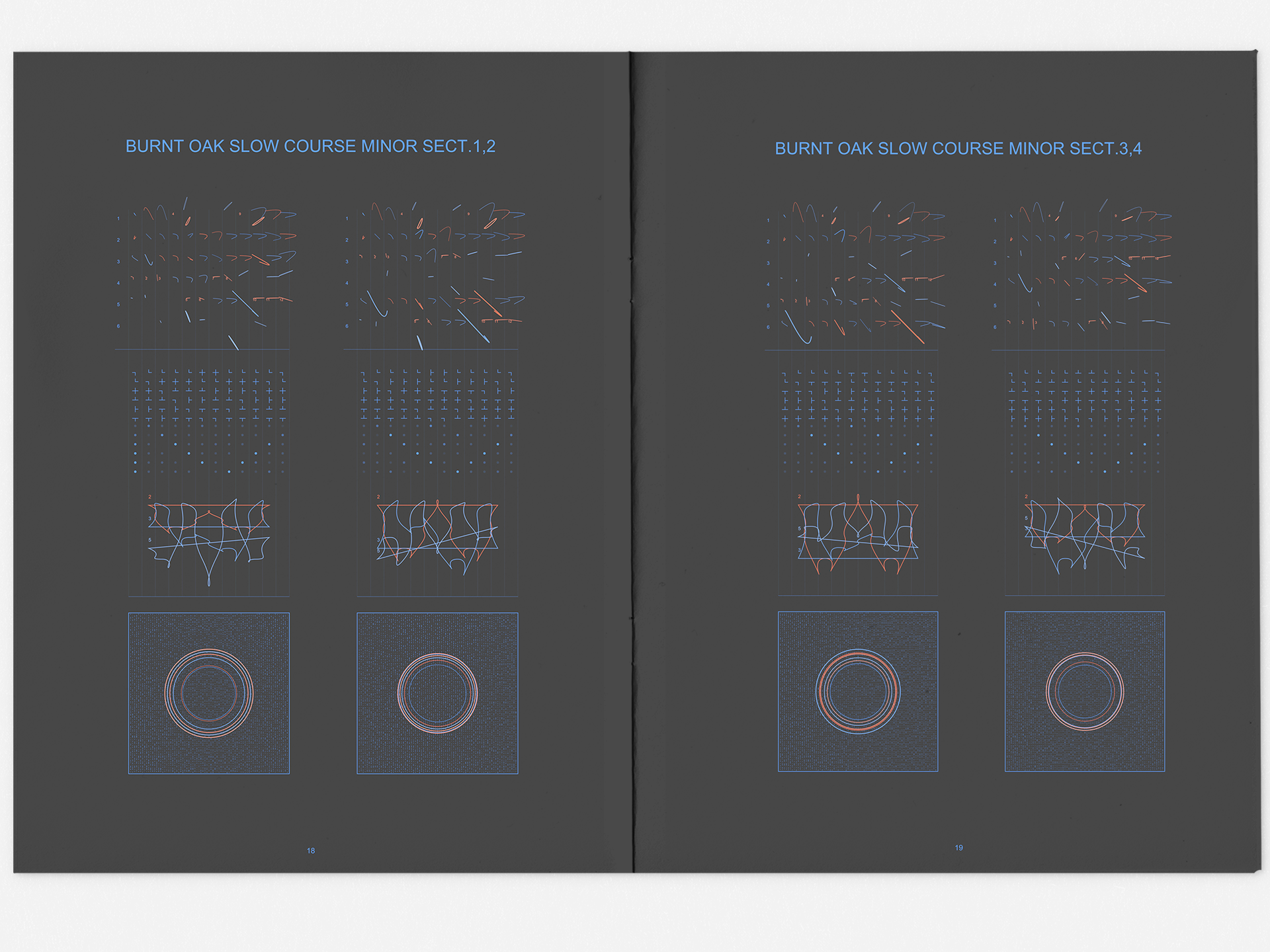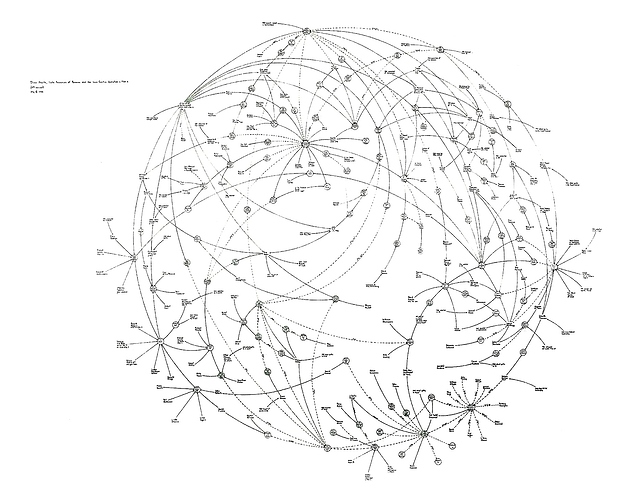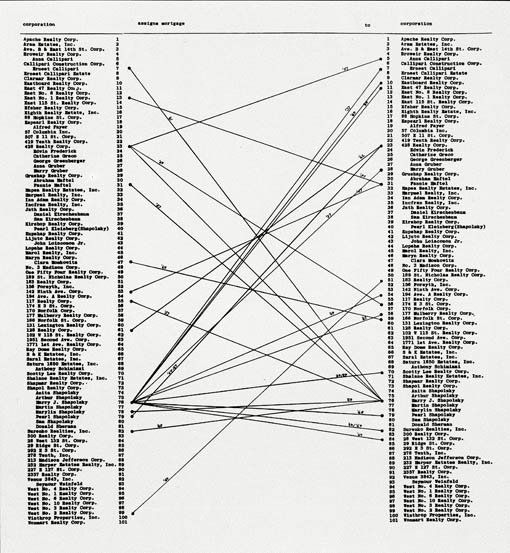Essential Ringing
Sequential Ringing Methods for 4 to 8 sources
Essential Ringing is a collection of graphic scores for four to eight sound sources which aims to reframe the numerical patterns of traditional method ringing styles.
produced by: Pietro Bardini
Introduction
Method ringing is a mathematical style of bell ringing that creates continually changing patterns that cannot be discerned as a conventional melody. In method ringing, bells are assigned a number which determines when they will be played. Methods are shown as strings of numbers, each string permutates the values of the previous, this way creating the patterns. Depending on the permutation technique involved, the resulting patterns will vary.
Below you can see the traditional score for the Cambridge Surprise Minor method.
Concept
Essential Ringing is composed of four chapters and 16 scores. Each chapter includes four graphic scores exploring a different ringing method.
The goal of this project was to create graphic scores for sound performance and composition, which used the rhythms and patterns of method ringing as a starting point. Within the scores are included volume dynamics and expressive movements which are not part of traditional method ringing but nonetheless are extracted from the relationships within the patterns. Essential Ringing offers a multi-dimensional approach to method ringing which extends its use to non-bell music.
Reading the scores
Each score is divided into chapters and depending on the number of sources it can span across one (for four sources) to six pages (eight sources). Each score has five separate graphical scenes which can be interpreted according to the performers need, however, the original interpretation is the following.
Scene 1: Each column is a string of values and each row a sound source. This scene should be read from left to right (alike scene 2 and 3) as it has a temporal element. This means that if we give each column a time frame (eg. 10 sec), we can move through the piece step by step. For example, in chapter 1 there are 16 strings of values – after 16 strings (10 seconds * 16) we move to the next section (the scores in chapter one are composed of three sections of 16 values).
Each source is assigned a different colour, the variation in colour tone is slight for aesthetic reasons and does not impose a rigid interpretation.
Scene 2: this uses the same maths of scene one, however it translates the curves into a rigid ASCII pattern. This can be used to keep track of changes more quickly however it lacks the dynamicity of scene 1.
Scene 3: a pattern of dots displays the intensity of the hits. At each strike point, we find a dot which varies in glow – the glow is calculated by subtracting the next value with the current thus giving us a representation of what is to come. This can be used to determine how soft or hard each sound should be played at each point in time.
Scene 4: here a selection of sources is visualised in their full duration. Instead of single strokes (or hits), the performer is invited to look at the overall movement of the source.
Scene 5: This scene gives a quick overview of the overall dynamic of the section. The larger the circle the louder is section for that source.
Below you can see a picture of pages 18-19 showing the scores (sections 1 to 4) for the Burnt Oak Slow Course Minor method.
Technical Overview
All the patterns, colours and shapes of this piece are a direct translation of method ringing values. No further values have been added or amended. The numerical sequences were read straight from text files and printed to PDF.
To achieve a cleaner code, I decided to use multi-dimensional ArrayLists, which allowed me to store and quickly retrieve the values (and differentiate titles from numbers) and their position in the strings (which was crucial to determine the dynamics explained above).
I decided to keep the shapes and colours especially simple to avoid a cluttered and imposing visual language. I hope the simplicity of its forms can help composers and performers familiarise with the scores quickly while offering room for improvisation and creative manoeuvres.
References
This work has been inspired by 20th Century graphic scores and experimental notation, in particular the work of artists and composers such as Channa Horwitz, Toru Takemitsu, Cornelius Cardew, the Fluxus movement, John Cage, Krzysztof Penderecki’, Christian Wolff.









































































